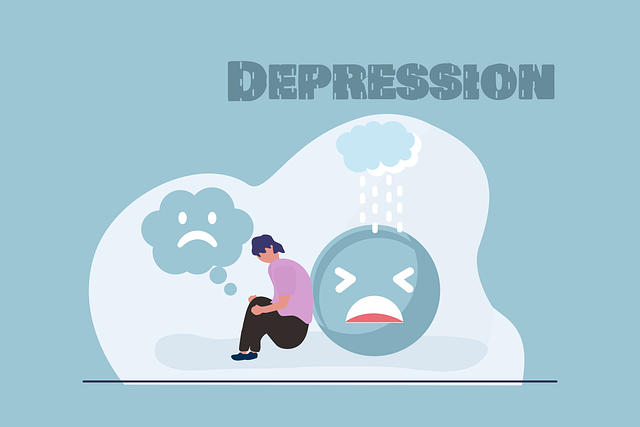Diet plays a pivotal role in managing and even preventing many common health conditions that affect both men and women. From heart disease and diabetes to hormonal imbalances and mental health challenges, the foods we consume can either support or hinder our body’s ability to function optimally. By adopting a thoughtful, nutrient-rich diet tailored to specific health needs, individuals can take proactive steps toward better well-being. Below, we explore how dietary choices can help manage some of the most prevalent health conditions for both genders.
1. Heart Disease
Heart disease remains one of the leading causes of death worldwide, but diet is a powerful tool for prevention and management.
Key Dietary Strategies:
- Increase Fiber Intake: Foods rich in soluble fiber, such as oats, beans, lentils, fruits, and vegetables, can lower LDL (“bad”) cholesterol levels.
- Prioritize Healthy Fats: Replace saturated and trans fats with unsaturated fats found in olive oil, avocados, nuts, and fatty fish like salmon. Omega-3 fatty acids are particularly beneficial for reducing inflammation and improving heart health.
- Limit Sodium: Excessive salt intake contributes to high blood pressure. Opt for herbs, spices, and lemon juice to flavor meals instead of salt.
- Eat More Plant-Based Foods: Diets rich in fruits, vegetables, whole grains, and legumes—such as the Mediterranean or DASH (Dietary Approaches to Stop Hypertension) diet—are associated with reduced cardiovascular risk.
For both men and women, maintaining a heart-healthy diet can significantly lower the risk of heart attacks, strokes, and other complications.
2. Type 2 Diabetes
Dietary management is central to controlling blood sugar levels and preventing complications in individuals with type 2 diabetes.
Key Dietary Strategies:
- Focus on Low Glycemic Index (GI) Foods: Whole grains, non-starchy vegetables, and legumes release glucose slowly, helping maintain stable blood sugar levels.
- Include Lean Protein: Chicken, turkey, fish, tofu, and legumes provide sustained energy without spiking insulin.
- Choose Healthy Carbohydrates: Swap refined carbs like white bread and sugary snacks for complex carbs like quinoa, sweet potatoes, and brown rice.
- Monitor Portion Sizes: Eating smaller, balanced meals throughout the day prevents dramatic fluctuations in blood sugar.
Both men and women with diabetes benefit from consistent meal timing and working closely with a healthcare provider or dietitian to tailor their diet.
3. Osteoporosis (Especially in Women)
Osteoporosis, characterized by weakened bones, disproportionately affects women, particularly postmenopausal women due to declining estrogen levels. However, men are also at risk as they age.
Key Dietary Strategies:
- Boost Calcium Intake: Dairy products, fortified plant-based milks, leafy greens (like kale and spinach), and almonds are excellent sources of calcium.
- Ensure Adequate Vitamin D: This vitamin aids calcium absorption. Spend time outdoors for natural sunlight exposure or consume fortified foods, fatty fish, and supplements if needed.
- Include Magnesium and Vitamin K: These nutrients support bone health and are found in foods like nuts, seeds, and dark leafy greens.
- Limit Alcohol and Caffeine: Excessive consumption can interfere with bone density.
A bone-supportive diet, combined with weight-bearing exercises, helps maintain skeletal strength and reduces fracture risk.
4. Hormonal Imbalances
Hormonal imbalances can manifest differently in men and women, affecting everything from energy levels to reproductive health.
For Women:
- Support Estrogen Balance: Cruciferous vegetables like broccoli, cauliflower, and Brussels sprouts contain compounds that help metabolize estrogen.
- Regulate Blood Sugar: Stable blood sugar supports hormone production. Focus on protein, healthy fats, and fiber-rich foods.
- Combat PMS Symptoms: Magnesium-rich foods (e.g., bananas, dark chocolate) and omega-3s (e.g., flaxseeds, walnuts) may alleviate cramps and mood swings.
For Men:
- Optimize Testosterone Levels: Zinc and vitamin D are critical for testosterone production. Include shellfish, eggs, mushrooms, and fortified dairy in your diet.
- Reduce Inflammation: Chronic inflammation can disrupt hormones. Anti-inflammatory foods like turmeric, ginger, berries, and green tea can help.
Balanced nutrition supports hormonal harmony and mitigates symptoms of imbalances.
5. Mental Health Conditions
Emerging research highlights the gut-brain connection, emphasizing the role of diet in mental health.
Key Dietary Strategies:
- Incorporate Omega-3 Fatty Acids: Found in fatty fish, walnuts, and chia seeds, omega-3s support brain function and reduce symptoms of depression and anxiety.
- Eat Probiotic-Rich Foods: Yogurt, kefir, sauerkraut, and kimchi promote a healthy gut microbiome, which influences mood regulation.
- Avoid Ultra-Processed Foods: High sugar and trans fat intake are linked to increased risks of depression and cognitive decline.
- Consume Antioxidant-Rich Foods: Berries, nuts, and green tea combat oxidative stress, which can exacerbate mental health disorders.
Both men and women can improve mental clarity and emotional resilience through mindful eating.
6. Obesity and Weight Management
Obesity increases the risk of numerous conditions, including heart disease, diabetes, and certain cancers. A balanced diet is fundamental for achieving and maintaining a healthy weight.
Key Dietary Strategies:
- Practice Calorie Awareness: Understand your daily caloric needs and adjust portions accordingly.
- Emphasize Whole Foods: Prioritize minimally processed options like fruits, vegetables, lean proteins, and whole grains.
- Stay Hydrated: Drinking water before meals can reduce calorie intake and curb overeating.
- Mindful Eating: Slow down, savor each bite, and listen to hunger cues to prevent overconsumption.
Weight management strategies should be personalized and sustainable, focusing on long-term habits rather than quick fixes.
7. Cancer Prevention
While no single food guarantees protection against cancer, certain dietary patterns can lower risk.
Key Dietary Strategies:
- Load Up on Antioxidants: Colorful fruits and vegetables like tomatoes, carrots, and blueberries neutralize free radicals that damage cells.
- Limit Red and Processed Meats: High consumption has been linked to colorectal cancer. Opt for plant-based proteins or lean meats instead.
- Include Cruciferous Vegetables: Broccoli, cabbage, and cauliflower contain compounds that may inhibit tumor growth.
- Moderate Alcohol Consumption: Excessive alcohol is a known carcinogen. Limit intake to reduce cancer risk.
Both men and women can adopt these preventive measures to safeguard their health.
8. Reproductive Health
Reproductive health concerns vary between genders but can often be supported through proper nutrition.
For Women:
- Fertility Support: Folate, iron, and omega-3s are vital for reproductive health. Leafy greens, lean meats, and seafood are excellent sources.
- Manage PCOS: A low-glycemic, anti-inflammatory diet rich in whole foods can help regulate insulin and hormone levels.
For Men:
- Enhance Sperm Quality: Antioxidants like vitamins C and E, selenium, and zinc improve sperm motility and count. Brazil nuts, citrus fruits, and spinach are beneficial.
- Maintain a Healthy Weight: Obesity negatively impacts testosterone levels and fertility.
Nutrition tailored to reproductive needs can optimize outcomes for both men and women.








